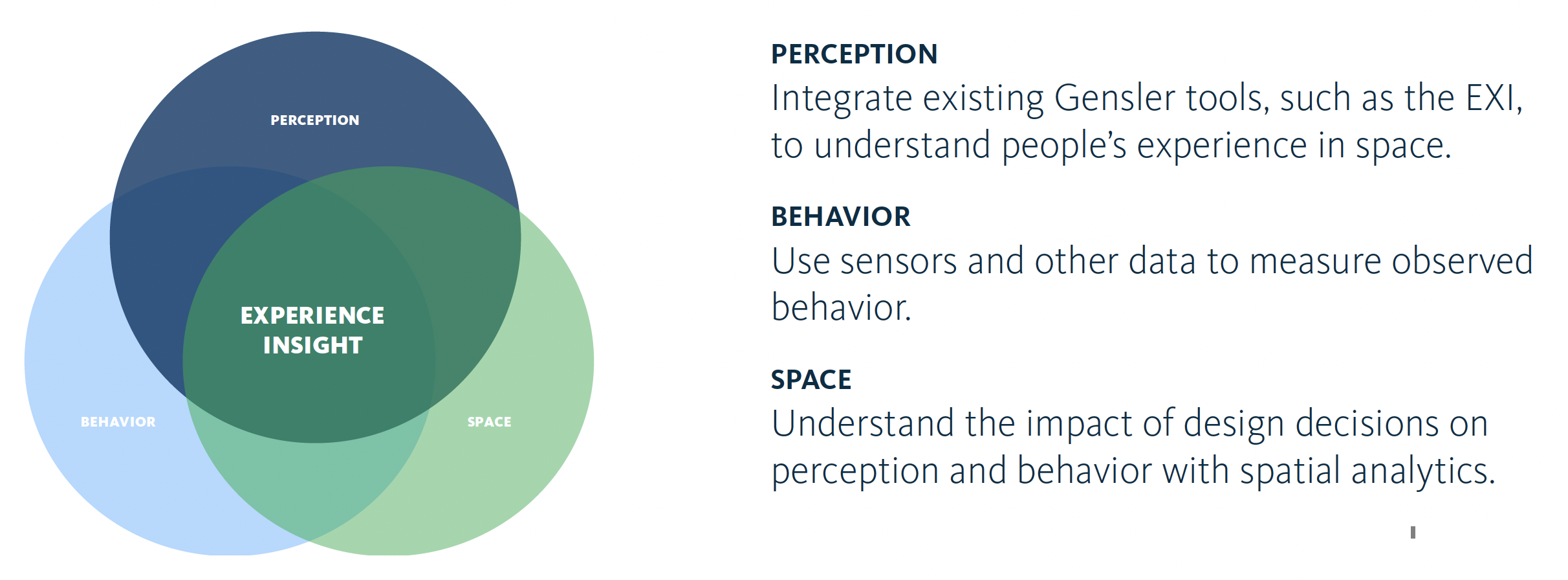Intelligent Places
Challenge
An explosion of sensor technologies, dashboards, and big-data analytics are flooding design and operations in the built environment. To drive wellness, resilience, and optimal operations requires a technology and data strategy to realize the intelligence you need for the performance you want. How do we create technologically and analytically relevant services to give our design expertise an edge?
Outcome
After more than a year researching the market, partnering with clients, and investigating the business opportunity, in spring of 2021, we launced three additional services as a part of Gensler’s Digital Experience Design practice area.
1. Spatial Analytics︎︎
2. Connected Environments︎︎
3. Living Labs︎︎
An explosion of sensor technologies, dashboards, and big-data analytics are flooding design and operations in the built environment. To drive wellness, resilience, and optimal operations requires a technology and data strategy to realize the intelligence you need for the performance you want. How do we create technologically and analytically relevant services to give our design expertise an edge?
Outcome
After more than a year researching the market, partnering with clients, and investigating the business opportunity, in spring of 2021, we launced three additional services as a part of Gensler’s Digital Experience Design practice area.
1. Spatial Analytics︎︎
2. Connected Environments︎︎
3. Living Labs︎︎
Client
Gensler Internal
Methods
- Market Research
- Trends Research
- Business Planning
Gensler Internal
Methods
- Market Research
- Trends Research
- Business Planning
Company
Gensler
Role
- Strategist
Gensler
Role
- Strategist
Value Proposition
Intelligent Places uses data to help clients make better decisions about space and Gensler design better spaces. By quantifying space, measuring perception, and modeling behavior, we have more tools to inform human-centered strategy, support design, and manage operations.
![]()

Human-Centered
Intelligence starts with a human-centered approach. It is increasingly important for us to consider the software that powers buildings and interiors to make the experience more user friendly. Through digital interactions, we can provide occupants with more seamless amenities, smarter services, and real-time information.
![]()

Operations-Centered
More and more, building operators ntelligent Places uses data to help clients make better decisions about space and Gensler design better spaces.
![]()

Design-Centered
Intelligent Places uses data to help clients make better decisions about space and Gensler design better spaces.
![]()

Use Case 1:
Ethnographic Research
Ethnographic Research
For this research project, we spatially integrated multiple information streams, including site observations, experience surveys and ethnographic research. By visualizing the data, the client was able to make better decisions about how to transform their mixed-use property.
![]()

Use Case 2:
Real-Time Analytics
Real-Time Analytics
More and more, clients are interested in deploying sensors to monitor room and seat occupancy, especially with COVID and the associated social distancing requirements. In the Gensler office, we deployed seat sensors to generate a heat map for identifying rooms that are high and low in demand at different times of day.
![]()
